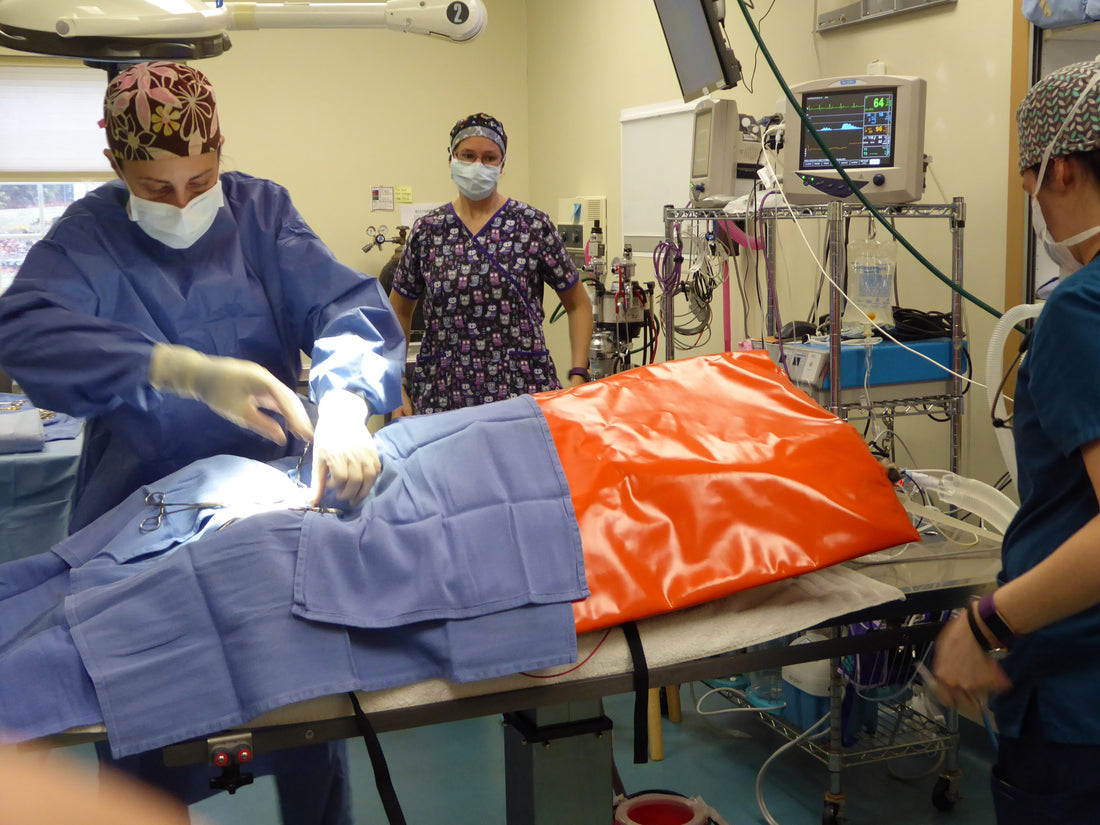Thermal blankets, or space blankets as NASA originally called them, were designed for the space program in 1964. They were introduced to help manage body heat dissipation for astronauts and counteract the drop or drastic increase in body temperature that can cause hypothermia or hyperthermia. The simple space blankets that we know today are made from materials that reflect body heat and are commonly used in emergency and athletic situations.
Materials Used in Common Thermal Blankets
Simple thermal or space blankets are made of a thin layer of polyethylene coated on one side with a thin layer of aluminum. Aluminum is an excellent reflector of infrared radiation which is the main mechanism of body heat loss. The polyethylene is very light weight and consequently quite fragile and easily torn. The major drawback to the space blanket is that it offers no insulation and has minimal heat retention properties.
How Thermal Blankets Work
The primary function of the simple thermal or space blanket is to reflect body heat. Human and animal bodies emit heat in the form of infrared radiation. The aluminum coating reflects this infrared radiation back to the body. The thin polyethylene layer acts as a barrier to convective heat loss to the environment.
The Use of Thermal Blankets in Veterinary Medicine
Hypothermia is the most common thermal consequence of general anesthesia. The majority of patient heat loss during anesthesia and surgery is through the skin by the mechanisms of radiation, conduction, convection and evaporation as defined below.
Radiation:
- Radiation is the major source of heat loss in surgical patients in which infrared radiant energy is transferred from the relatively warm patient to the environment.
- Conduction refers to the direct flow of heat from the body to the surrounding air, fluids or solid materials upon which a patient may be supported such as a metal surgical table.
- Convection involves the physical movement of ambient air or fluids by which body heat is removed from the patient
- Body heat is lost when warmed moisture on the body surface evaporates thereby carrying body heat with it. Body surface moisture can be in the form of body fluids, perspiration and surgical prep solutions such as alcohol and betadine to name a few.
Hypothermia occurs in three phases following anesthetic induction.
Phase 1:
In the first hour of anesthesia there is a rapid decline in body temperature as a consequence of anesthetic induced peripheral vasodilation and lowering of the temperature threshold in the hypothalamus preventing the institution of normal physiologic thermoregulatory mechanisms. These processes allow a redistribution of body heat from the body core to the periphery where heat is lost primarily through the skin by radiation and convection. Unless preventative measures are taken, 81 percent of the body heat loss that will ultimately occur during the course of that anesthetic, occurs in the first 30 to 45 minutes after anesthetic induction.
Phase 2:
Over the next two hours of anesthesia, body temperature declines in a slower linear fashion as heat loss exceeds heat production. This occurs as a consequence of a decrease in metabolism and inhibition of heat production by thermoregulatory mechanisms in the hypothalamus by anesthetic drugs.
Phase 3:
Over the next three to four hours of anesthesia a core body temperature plateau is reached after which temperature stabilizes and remains relatively unchanged as a thermal steady state is achieved.
The graph below is illustrative of these three phases of hypothermia.

The ConRad Thermal Blankets are at the Veterinary forefront of hypothermia prevention. They act as a barrier to the four mechanisms of body heat loss; Radiation, Conduction, Convection and Evaporation. They have proven their mettle in preop, preop prep, anesthetic induction, intraop and postop. They are designed for patient comfort yet durable enough to withstand the rigors of the veterinary OR. The exterior is a soft, supple military grade material that is durable and fluid proof. The interior has a heat reflective and heat insulative layer. The heat reflective layer is not the fragile flimsy polyethylene film of which current thermal/space blankets as made. The ConRad heat reflective layer on the patient side is a proprietary material which has 95 percent heat reflective properties on both sides and is tear resistant. The additional heat insulative layer ensures that the residual 5 percent emitted body heat is retained for patient warming.

VetORSolutions received the First Place 2022 Veterinary Innovation Award from the Veterinary Innovation Council in large part due to the innovations designed into the ConRad Thermal Blankets and their contribution to normothermic patient care.
Add Award-Winning ConRad Thermal Blankets To Your OR
Integrate the ConRad Thermal Blankets into your surgical protocols to keep patients normothermic and improve patient comfort and recovery. ConRad Thermal Blankets support patient recovery in the following ways:
- Improved Surgical Outcomes: Using the ConRad Thermal Blankets perioperatively maintains stable body temperature, reducing the complications of hypothermia which can negatively impact recovery and patient outcomes.
- Enhanced Post-Operative Recovery: Keeping animals warm preop, intraop and postop with the ConRad Thermal Blankets promotes faster postop recovery by normalizing anesthetic drug metabolism.
- Versatile Use: Beyond the OR, the ConRad Thermal Blankets can be used in imaging, patient transport, postop recovery and in cages.

Visit our products page to browse our full range of veterinary-specific thermal technologies and surgical solutions. From advanced thermal blankets to innovative surgical positioning equipment, our products are designed to meet the specific needs of veterinary surgeons and enhance patient outcomes.


